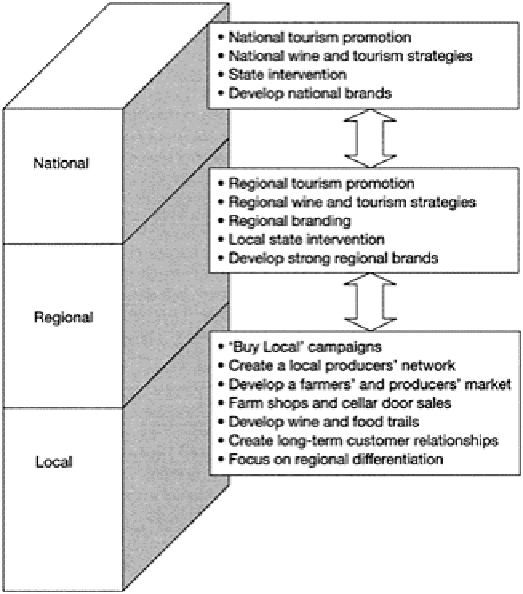Geography Reference
In-Depth Information
Figure 6.1:
Relationship between national, regional
and local strategies
and branding are extremely common strategies to link food with tourism. For example, in
an effort to capitalise on and maximise the tourism potential of the wine industry, several
Australian states have instituted specific wine and food tourism bodies to facilitate and
co-ordinate the development of wine tourism (Hall and Macionis 1998). However,
despite the ability of regions to brand themselves in terms of wine and food tourism, the
establishment of other forms of network relationships between food and wine producers
and the tourism industry may be more problematic (A.Smith and Hall 2003; Hall 2004a,
2004b). Hall et al. (1997-8) noted several barriers to creating effective links between
wine producers and the tourism industry which can be extended to the majority of
primary producers in Australia and New Zealand, including
• the often secondary or tertiary nature of tourism as an activity in the wine industry
• a dominant product focus of wine-makers and wine marketers
• a general lack of experience and understanding within the wine industry of tourism, and
a subsequent lack of entrepreneurial skills and abilities with respect to marketing and
product development







